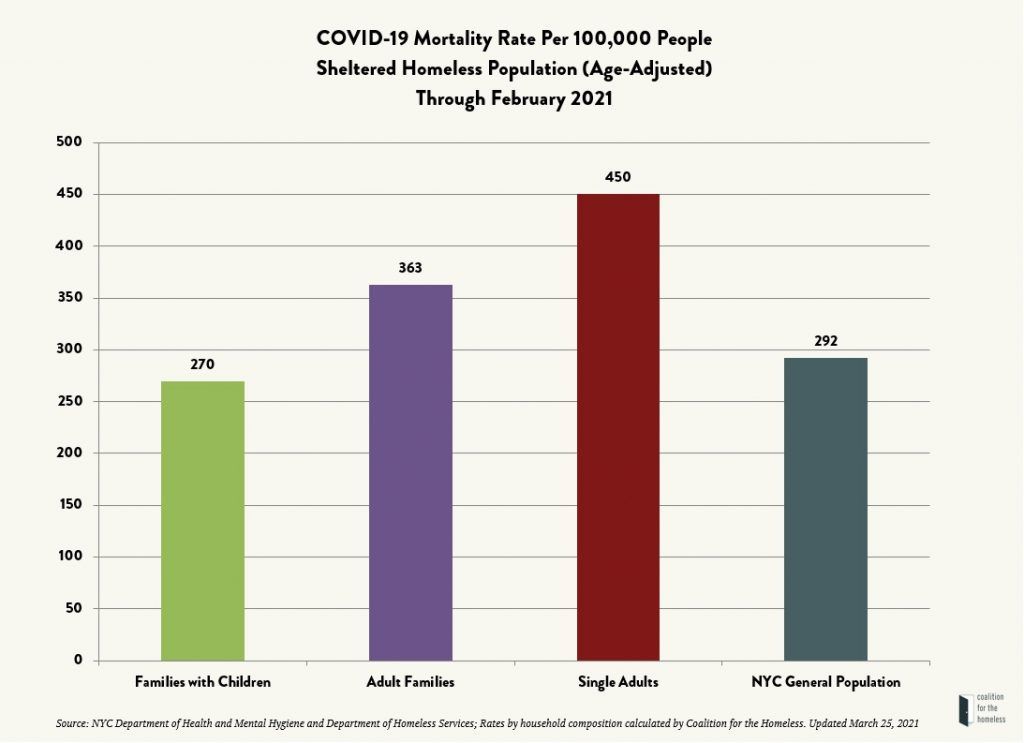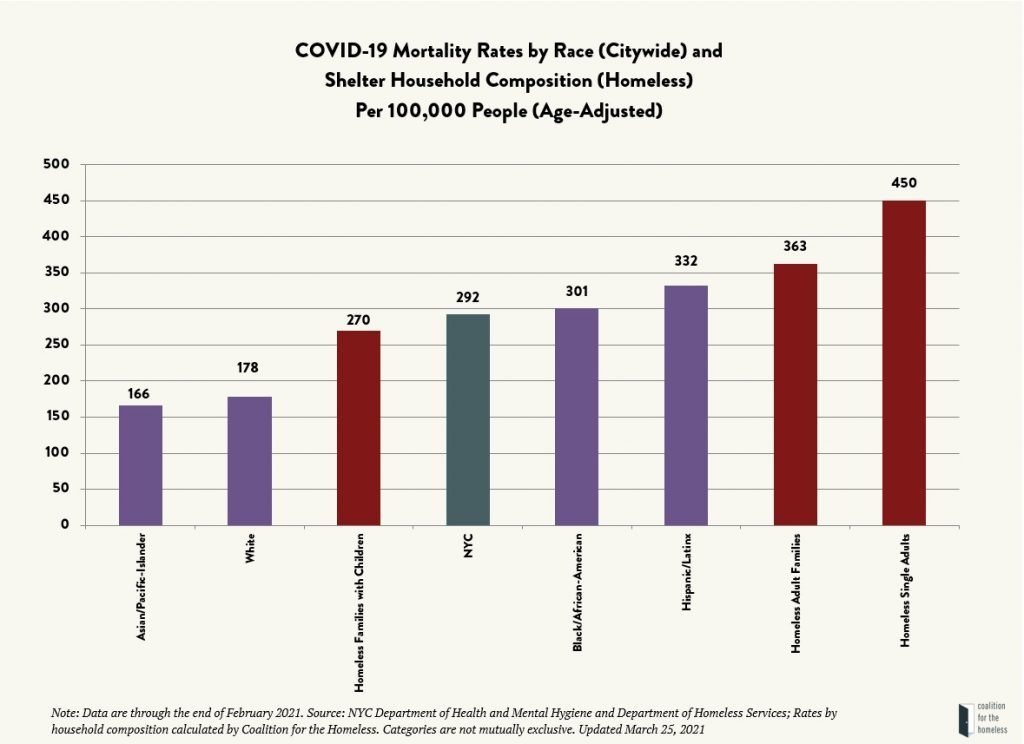Age-Adjusted Mortality Rate for Sheltered Homeless New Yorkers
As of the end of February 2021, the New York City Department of Homeless Services reported that 113 homeless people had died from COVID-19, including 101 sheltered individuals and 12 unsheltered individuals. Because the sheltered homeless population skews much younger than the general New York City population, an age-adjusted analysis indicates that there have been more deaths among sheltered homeless New Yorkers than would have been expected based on the overall city mortality rate.
In consultation with Charles Cleland, PhD, a biostatistician at NYU, Coalition for the Homeless calculated the age-adjusted mortality rates among sheltered homeless New Yorkers. [1] Through the end of February 2021, the cumulative New York City mortality rate due to COVID-19 was 292 deaths per 100,000 people. For sheltered homeless New Yorkers, it was 436 deaths per 100,000 people – 49 percent higher than the New York City rate. Most COVID-19 deaths among sheltered homeless New Yorkers occurred in April 2020, following the city’s overall trend.
[Click the charts to enlarge]
The type of shelter setting and prevalence of risk factors among homeless people affect their exposure to the novel coronavirus and vulnerability to COVID-19. The age-adjusted mortality rate for those staying in shelters varies by sub-population and is highest among those living in congregate shelters (most single adults) and those with higher rates of disability and risk factors (adult families and single adults). As of the end of February 2021, the age-adjusted mortality rate for families with children was 8 percent lower than the NYC general population at 270 per 100,000 people; the rate for adult families without minor children was 24 percent higher at 363 per 100,000 people, and the rate for single adults was 54 percent higher at 450 per 100,000 people.
New York City also calculates the age-adjusted mortality rates among racial and ethnic groups, showing the disproportionate impact that COVID-19 has had on Black and Hispanic/Latinx communities. Nearly 90 percent of single adults and family heads in shelters are Black or Hispanic/Latinx. With the added risk of increased exposure from lacking a safe place to live, the age-adjusted mortality rates at the end of February 2021 for homeless single adults and adult families surpassed those of Black and Hispanic/Latinx New Yorkers overall, while the age-adjusted mortality rate for homeless families with children was slightly lower than the overall NYC rate. The age-adjusted mortality rate for homeless single adults was 153 percent higher than white New Yorkers overall, underscoring the vast inequities that place this group in such grave danger of death due to COVID-19.
[1] Due to a lack of available data on the population and age of unsheltered homeless New Yorkers, this analysis does not include deaths among that population.
Methodology notes: To calculate the age-adjusted mortality rate for homeless New Yorkers in shelters, we used the indirect methodology outlined in this paper. Data for the city’s overall population and mortality were compiled from the Department of Health’s COVID-19 data tracking website and confirmed with the Department of Homeless Services. Data for sheltered homeless New Yorkers are from the Department of Homeless Services. Because homeless New Yorkers in shelters are likely more transient than the overall New York City population, we broke down mortality rates by month for the city and the population in shelters and calculated the average and cumulative differences across months.
Higher mortality rates among homeless New Yorkers are not entirely unexpected, given that individuals experiencing homelessness face compounding risks for exposure to the coronavirus and a higher rate of underlying health conditions that place them at a greater risk for experiencing serious complications from the virus. This is particularly true for single adults in congregate shelter settings, underscoring the importance of the use of private hotel rooms to keep individuals experiencing homelessness safe and to prevent further unnecessary deaths.


